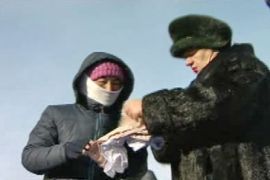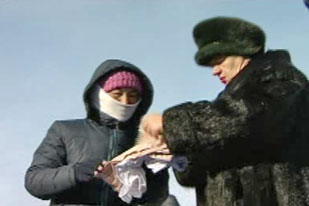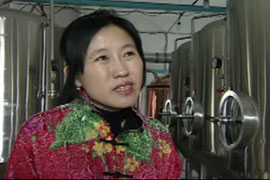Russian city curbs Chinese migrants
Many Chinese find themselves at home in Russia’s eastern city of Blagoveschenck.

 |
| Seven million Chinese are already living and working on the Russian side of the border |
The authorities in Blagoveschenck, a city in Russia’s far east, are introducing immigration restrictions in the hope of curbing a rising tide of migration from China.
A Russian agriculture and gold mining outpost for 150 years, the city of Blagoveschenck is situated on the bank of the Amur river.
It is a year-round crossing point for Chinese coming into Russia.
With more than seven million Chinese nationals already living in three regions on the Russian side of the border and more than 100 million in the equivalent border regions on the Chinese side, some of the locals are concerned that the number of migrants into Russia could grow out of control.
Consequently new migration laws are being put into place to restrict the entry of Chinese migrants into Blagoveschenck.
Alexander Migulya, the city’s mayor, told Al Jazeera that although the Chinese are welcomed in terms of tourism and cultural exchange, they are only “visitors” to Russia.
He said: “We have friendly relations with our very close neighbour, but I would like to underline that there is no integration…”
But some, like Long Chen, a Chinese businessman who has been married to Sveta, his Russian wife, for 10 years, disagree.
Chen said: “We are very different. I know mixed couples who married, lived together, and then divorced. But I’m used to Russia now, and I like it.”
Sveta Chen, his wife, said: “I couldn’t replace him. He doesn’t drink, which is important in Russia where we have a lot of drunks. He doesn’t smoke, he helps me at home and he makes money.”
Fortune-seekers
 |
| Cheap Chinese goods are on sale in the city’s markets |
European colonial expansion in the 19th century vastly increased the number of Chinese living and working abroad.
Many were working as indentured labourers, but some Chinese also left to seek their fortune.
The movement of Chinese abroad was restricted with the establishment of the People’s Republic in 1949, but has greatly increased in the past few decades.
By the end of the 20th century it was estimated that more than 33 million ethnic Chinese were living outside China.
Russia and China share one of the longest border areas in the world and since the collapse of the Soviet Union, relations between the two countries have been restored and trade between the two has increased.
Chinese labour fills in for Blagoveschenck’s local workforce, depleted by Russia’s demographic decline. While gambling is banned in China, it is not in Russia and Blagoveschenck has 20 casinos catering to Chinese gamblers.
Cheap Chinese goods are on sale in the city’s markets and many Chinese have made the city their home.
At home in the city
 |
| Lihua Li has lived in Blagoveschenck for 10 years |
Lihua “Larisa” Li, a Chinese entrepreneur came to the Blagoveschenck from the Chinese city of Xeixe, on the opposite bank, 10 years ago.
Now she uses her Russian name, Larisa, and she and a Russian business partner are building apartments.
She also owns two restaurants and the only beer brewery in Blagoveschenck, which had been left derelict by its previous Russian owners.
“Our business is part Chinese, part Russian. Russians are more technically skilled, but when it comes to construction you need Chinese … they work from early morning until late at night,” she said.
“And they don’t need days off.”
Few in Blagoveschenck want the Chinese to leave and many believe they will find a way around the new restrictions.